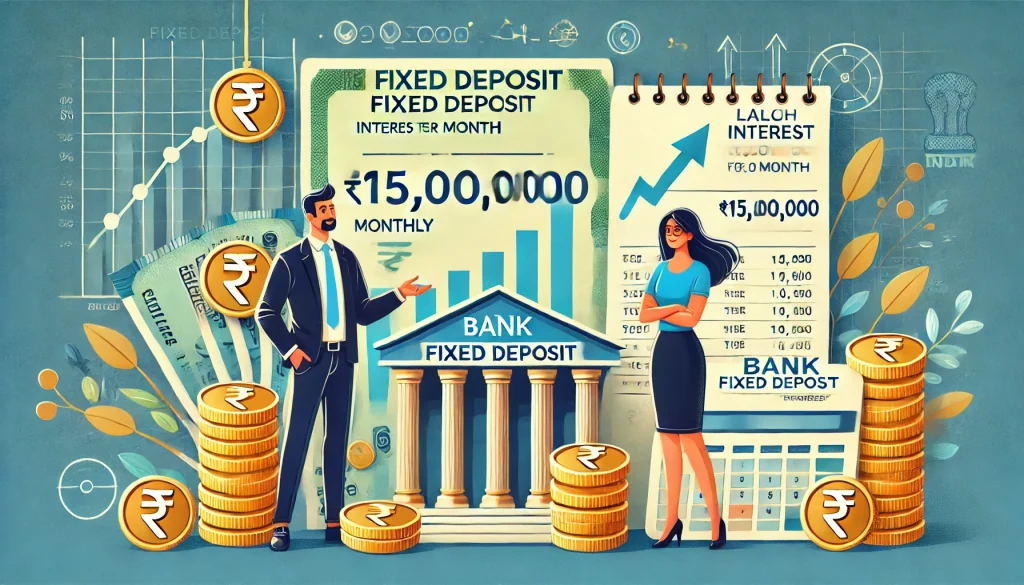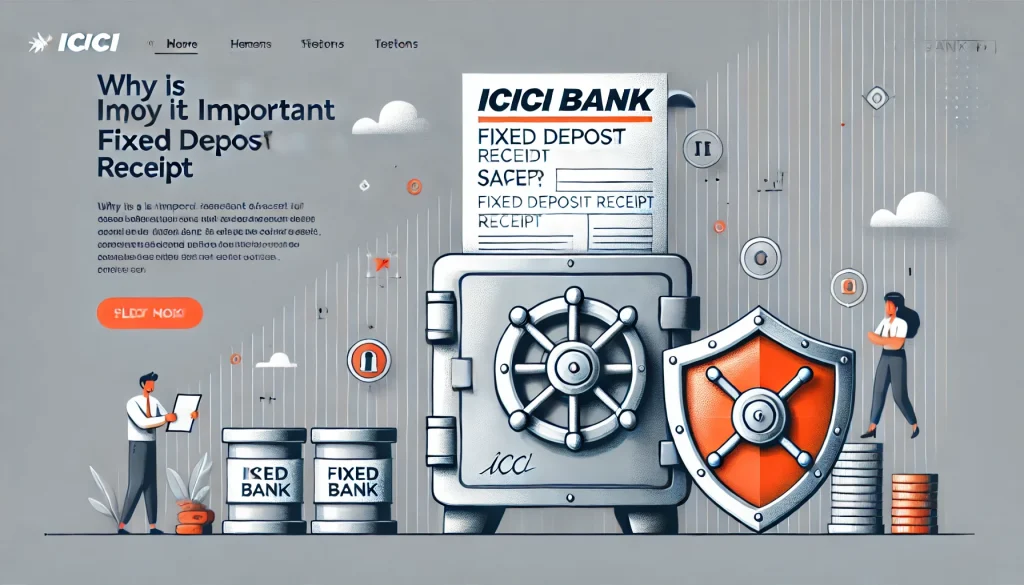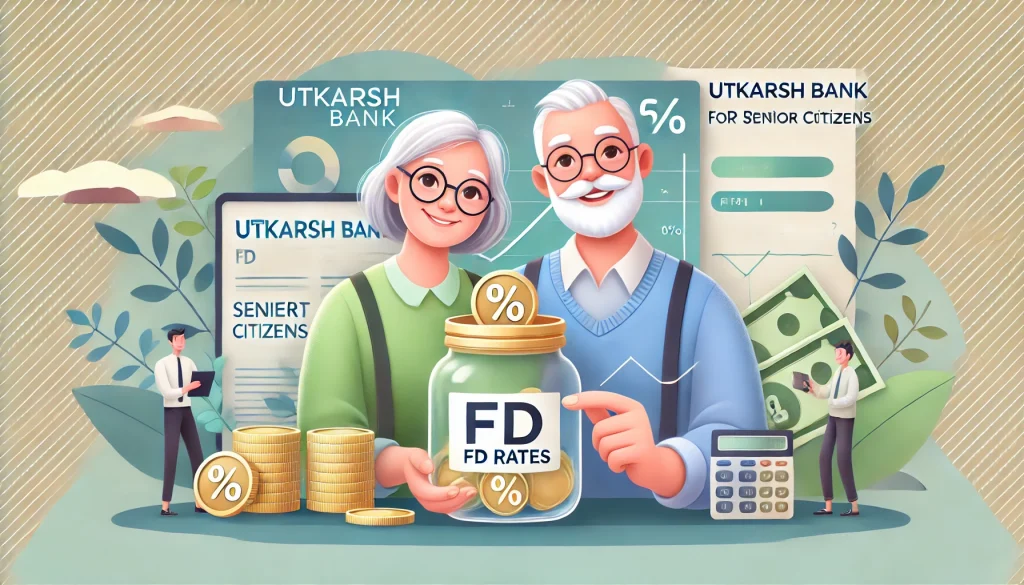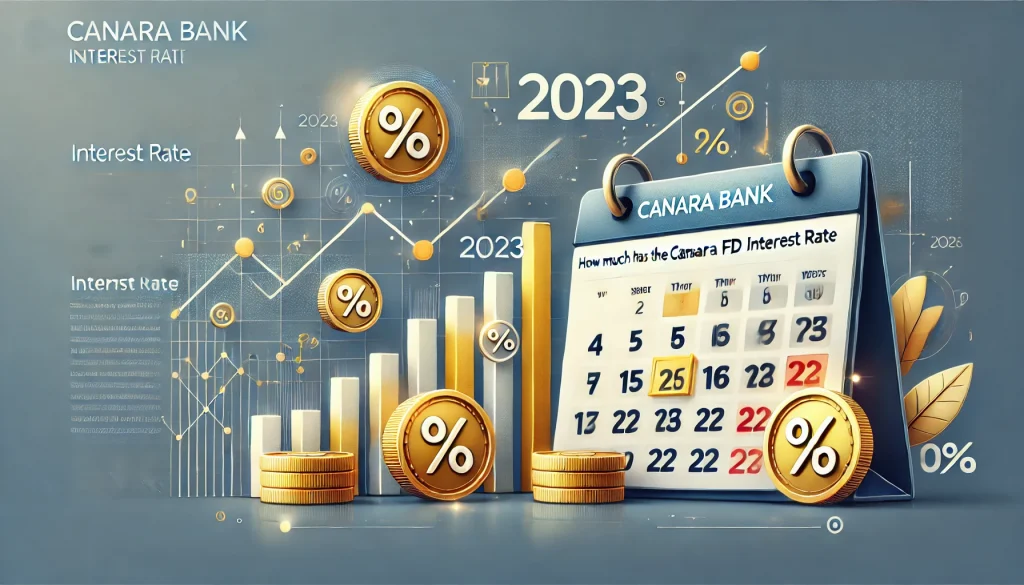
Those who look to open a ₹15 lakh fixed deposit account typically aim to generate a steady, passive source of income. If you get an assured 7% interest rate from any type of FD on a lump sum investment of ₹15 lakh, it can guarantee a fixed ₹8,750 income every month. Additionally, you gain a total of ₹6 lakh as accrued interest by the end of FD tenure.
Monthly Interest on a ₹15 Lakh Fixed Deposit
To explain the monthly interest income fom a ₹15 lakh FD with a 5-year lock-in period, we have provided the following table:
| Monthly Interest Rate | Interest Payout Per Month (in ₹) |
| 6.00% | 7,500 |
| 6.50% | 8,125 |
| 7.00% | 8,750 |
| 7.50% | 9,375 |
| 8.00% | 10,000 |
| 8.50% | 10,625 |
| 9.00% | 11,250 |
| 9.50% | 11,875 |
| 10.00% | 12,500 |
Note: Your actual monthly returns from a fixed deposit account are most likely to vary depending on your provider. The above-mentioned payouts are merely indicative.
₹15 Lakh Fixed Deposit Interest Provided by Banks and NBFCs in 2024
In 2024, banks and NBFCs offer different interest rates for a ₹15 lakh fixed deposit held for a 5-year term. Here’s a quick look into it:
| Bank/NBFC | Interest Rate (p.a.) | Monthly Payout (in ₹) | Interest Rate (p.a.) for Seniors | Monthly Payout for Seniors (in ₹) |
| Shriram Finance | 8.47% | 10,587 | 8.97% | 11,212 |
| Bajaj Finance | 7.81% | 9,762 | 8.05% | 10,062 |
| Mahindra Finance | 7.55% | 9,437 | 7.80% | 9,750 |
| IndusInd Bank | 7.25% | 9,062 | 7.75% | 9,687 |
| SBI | 6.50% | 8,125 | 7.50% | 9,375 |
| AU Small Finance Bank | 7.21% | 9,012 | 7.70% | 9,625 |
| Axis Bank | 7.00% | 8,750 | 7.75% | 9,687 |
| IDFC First Bank | 7.00% | 8,750 | 7.50% | 9,375 |
| Federal Bank | 6.60% | 8,250 | 7.50% | 9,375 |
| HDFC Bank | 7.00% | 8,750 | 7.50% | 9,375 |
Note: These listed FD interest rates for a 5-year fixed deposit account can change later on at the discretion of the concerned institution.
Yearly Interest on a ₹15 Lakh FD Account
With an average ₹15 Lakh fixed deposit interest rate of 7.80% per year, you may expect your investment to grow as follows:
| Investment Term | Annual Payout |
| 12 months or 1 year | ₹16,17,000 |
| 24 months or 2 years | ₹17,43,126 |
| 36 months or 3 years | ₹18,79,090 |
| 48 months or 4 years | ₹20,25,659 |
| 60 months or 5 years | ₹21,83,660 |
Note: These figures are aimed to help explain FD yields, but actual payouts can vary depending on the bank or NBFC you choose.
TDS on a ₹15 Lakh Fixed Deposit
For those investing a significant capital of ₹15 lakh in a fixed deposit, several tax implications become highly significant. Thus, you should familiarise yourself with these regulations for convenient management of your FD account.
- Your FD issuer will charge a 10% TDS amount on your yearly profits if the interest value for that financial year exceeds ₹40,000.
- The upper limit for tax-free FD earnings has been set to ₹50,000 for senior account holders.
- If your annual income is less than ₹3 lakh, you need to present Form 15G or 15H (for seniors) to legally avoid TDS.
- For individuals who do not submit their PAN details, their FD provider charges a 20% TDS on annual interest income.
Penalty for Withdrawing a ₹15 Lakh Fixed Deposit Before Maturity
When you withdraw your fixed deposit investment ahead of the maturity date, it directly results in compromised earnings. Most banks and NBFCs levy lower rates on funds withdrawn against the original fixed deposit rate. Besides this, you also have to furnish a penalty amount which further lowers your estimated returns.
Important Things to Consider Before Investing ₹15 Lakh in a Fixed Deposit
It is highly suggested to consider these 5 factors before investing a lump sum ₹15 lakh in an FD:
- Minimum Tenure Clause
Before committing to any NBFC or bank FD, choosing the right tenure is crucial as it impacts the interest rate and returns. So, you should make sure that your FD term aligns with your financial goals. It helps to balance short-term liquidity needs with long-term growth expectations for optimal benefits.
- Type of FD
Different types of fixed deposits, such as cumulative and non-cumulative, offer varied interest payout schedules. Thus, while researching you need to pick a particular category based on whether you prefer regular interest income or a lump sum at maturity.
- Early Withdrawal Fee
Early withdrawal penalties diminish your returns remarkably if you request access to funds before maturity. Thus, it is necessary to always read the terms carefully and understand the miscellaneous fee structure. Following this, you unknowingly contribute a lot to your emergency financial planning.
- Secured Loan Options
One benefit of certain FDs is the ability to use them as collateral for secured loans. This feature can provide liquidity without breaking the deposit, allowing you to meet urgent needs while maintaining interest earnings.
The interest you earn depends on the interest rate offered by the bank or financial institution and the tenure of the deposit. For example, at a 6% annual interest rate, you could earn approximately ₹7,500 per month.
The primary factors include:
Interest rate offered by the bank or NBFC
Tenure of the fixed deposit
Type of interest payout (monthly, quarterly, annually, or at maturity)
Premature withdrawal penalties, if applicable
Yes, fixed deposits are a secure investment option for generating regular monthly income. Opting for a monthly interest payout scheme provides consistent cash flow, making it suitable for retirees and individuals seeking stable returns.
Yes, you can withdraw your FD prematurely; however, most banks and financial institutions impose a penalty for early withdrawal, which may impact your total returns.
You can use an FD Calculator available on Stable Money to quickly calculate your monthly interest based on the deposit amount, interest rate, and tenure.


